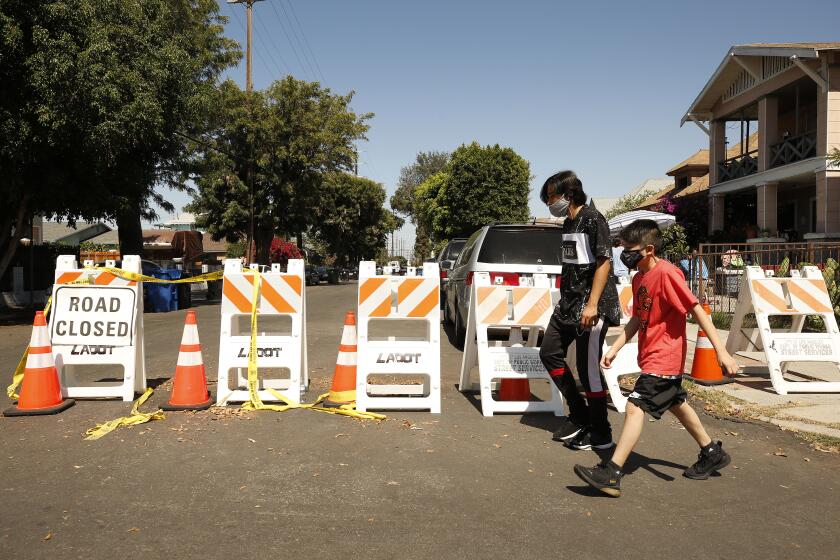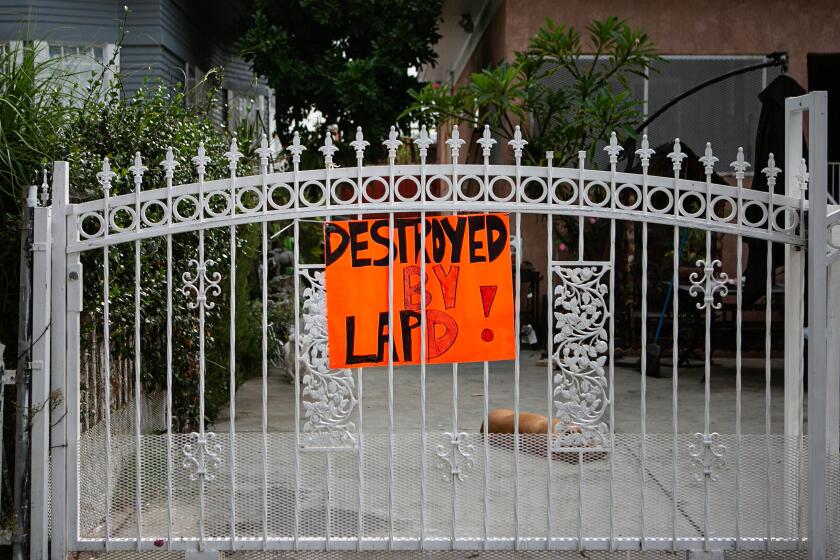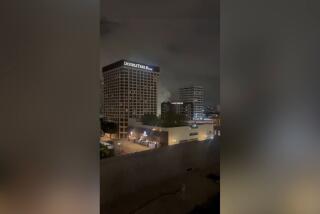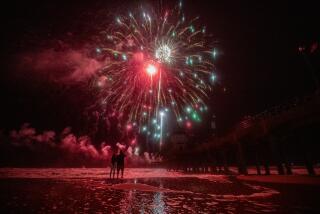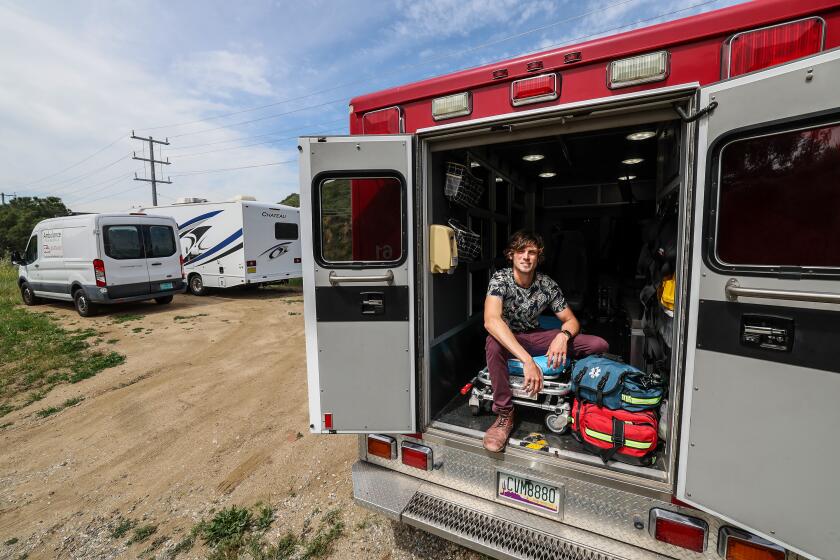From a fireworks tip to ‘catastrophic failure’ in 12 hours: How the LAPD blew up a neighborhood
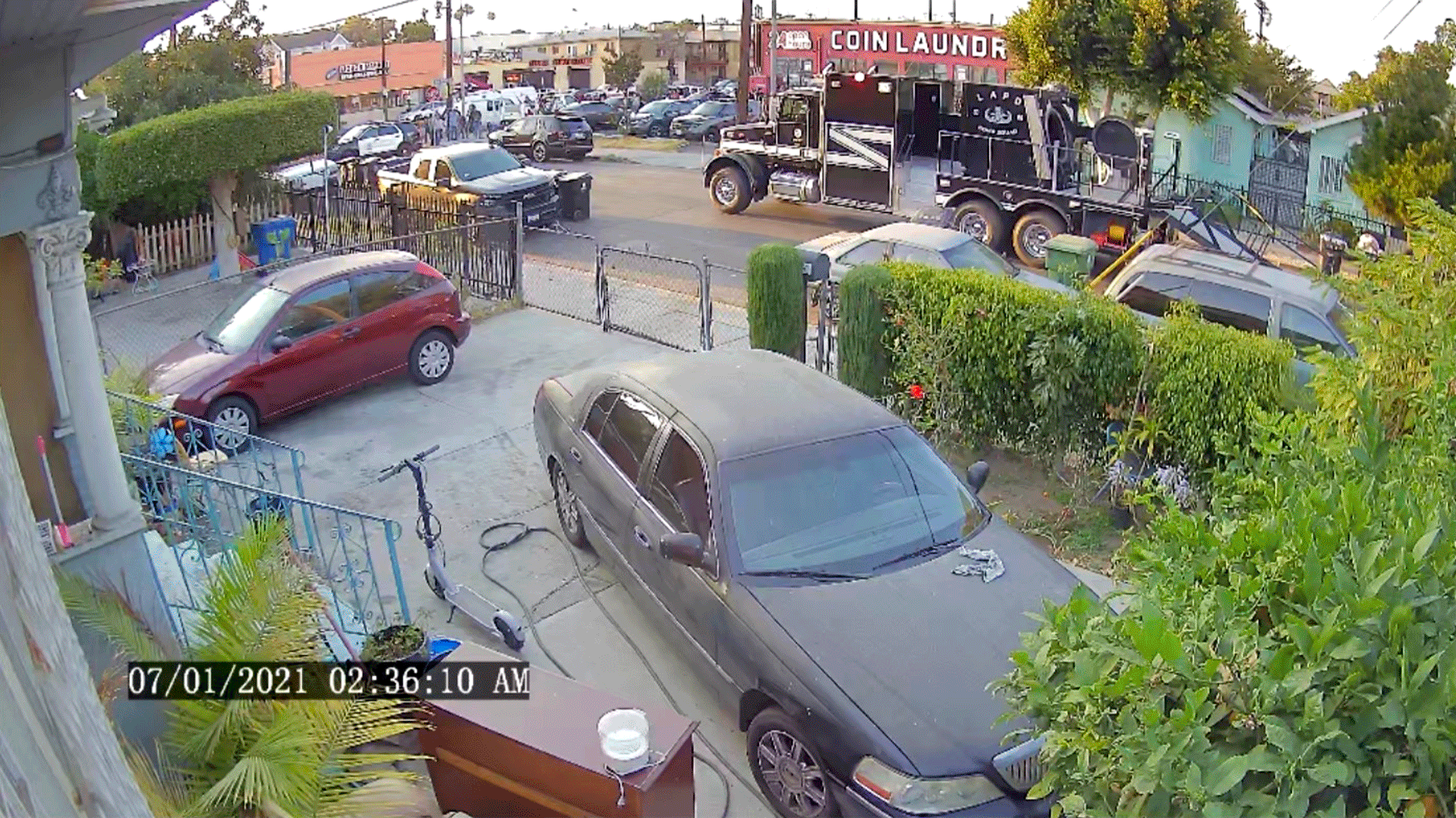
In a city obsessed with lighting fuses for big events, the anonymous tip to police was not particularly explosive: A man was selling illegal fireworks out of an alley in South L.A.
Los Angeles police officers pulled up to the pink house on East 27th Street on June 30 and found dozens and dozens of boxes — some stacked nine high — marked with an explosives symbol and eye-catching labels: King of Pyro. Supernova Rockets. All American Block Buster.
As more police arrived, Jose Becerra and his wife, Claudia Silva, watched it all unfold in front of their home, which sits next door to the pink house. Later, after the bomb squad came and their family was warned to stay inside, Silva asked an officer if they’d be safe.
“Yes, don’t worry,” she recalled the officer saying.
Residents had no idea that at least one person — the most experienced bomb technician on the scene — was worried. According to a new inspector general’s report, he had expressed concerns to his fellow technicians about how to dispose of something found with the commercial fireworks: hundreds of less stable, homemade explosives.
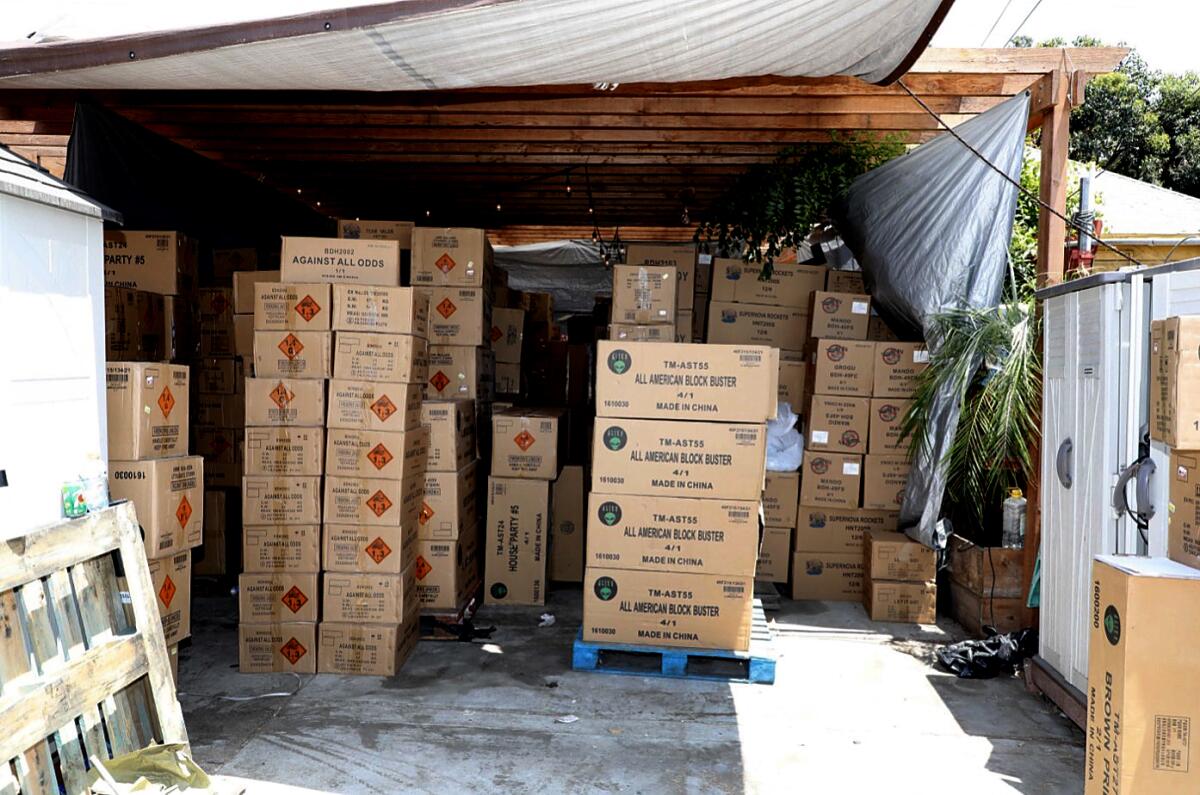
That technician would be largely ignored, though one of his last-minute warnings was heeded and probably prevented many injuries.
The homemade explosives were deemed too volatile to haul away, so authorities decided to detonate them on site in a “total containment vessel.” The explosion that followed is well known. The blast destroyed much of the surrounding neighborhood, damaging 35 properties, injuring 17 people and displacing dozens more residents — many of whom have never returned.
More than a month after the LAPD blew up a block of East 27th Street while trying to safely detonate a cache of illegal fireworks, displaced families are still struggling.
In the months since, authorities have attempted to reconstruct what happened during those 12 hours between the tip and the explosion to understand how things went so wrong. Last month the Los Angeles Police Department’s inspector general published a report that revealed for the first time how members of the bomb squad had interacted in the hours before the blast.
Along with input collected by The Times from local residents, the report helps paint the clearest picture to date of how guesswork and a laissez-faire management style led to what it calls a “catastrophic failure.”
But such scrutiny would come later, after unusually large amounts of explosives were placed into the containment vessel to be, as they say in bomb squad parlance, “rendered safe.”
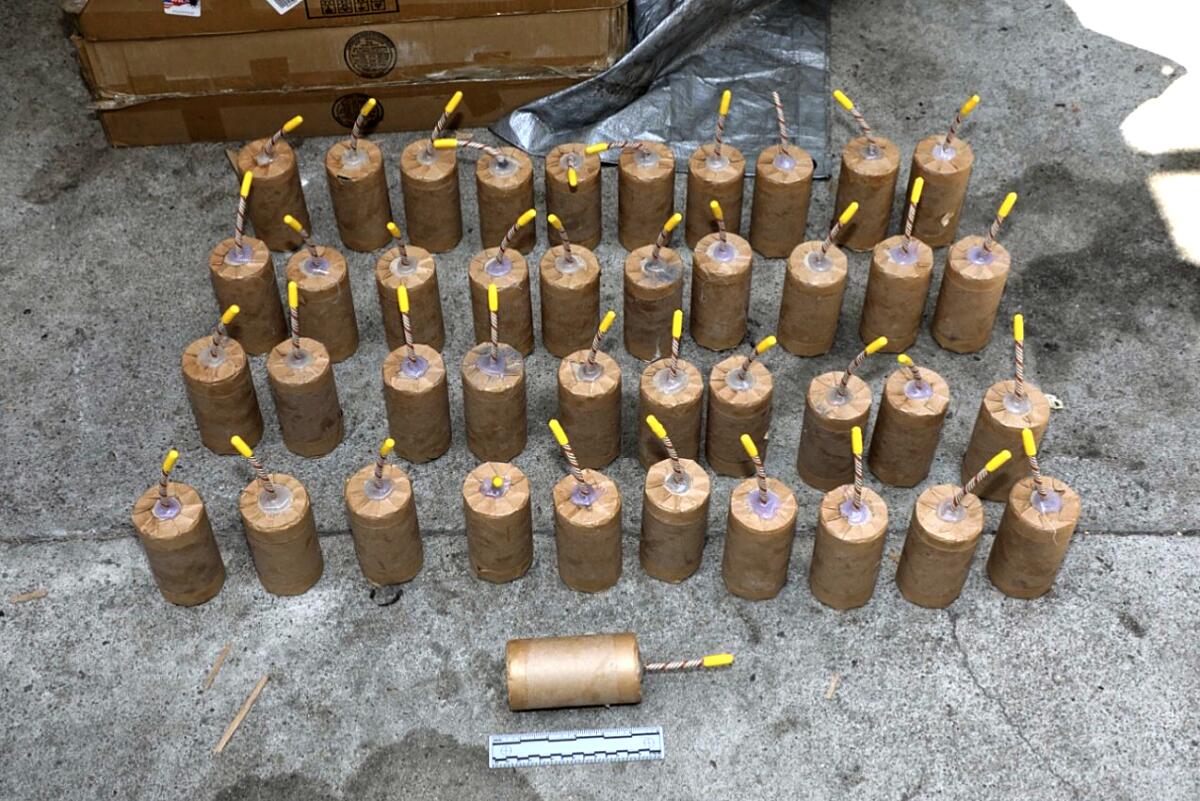
7:54 to 11 a.m.
Dispatchers sent the nugget of information — illegal fireworks for sale — over the radio at 7:54 a.m. About an hour later, Becerra and Silva, who were getting ready to pick up breakfast for their family, noticed officers focusing on the house next door, the home of 26-year-old Arturo Ceja III.
The couple initially stayed inside their own home, shared by 10 family members including two elderly aunts, because they didn’t know what was going on and feared potential gunfire. But then they heard the police shouting about fuegos pirotécnicos. Fireworks.
Subscribers get early access to this story
We’re offering L.A. Times subscribers first access to our best journalism. Thank you for your support.
This seemed less serious. Residents along 27th Street were used to hearing fireworks in the weeks leading up to the Fourth of July and after. The concussions were so strong they sometimes set off car alarms.
But residents had never seen this kind of police response, Becerra said.
Police said it was Ceja’s mother who gave officers permission to search the property. Many boxes of fireworks were stamped “Made in China.” The logo of a green space alien marked some boxes as coming from Area 51, a fireworks dealer in Nevada.

The officers, realizing they had a lot on their hands, called for backup. By about 9:30 a.m., the first bomb technician was on the scene, the LAPD’s operations center was notified, and more LAPD personnel started arriving.
It isn’t unusual for police to take possession of commercial fireworks. At the exact same time across the city, two LAPD bomb technicians were staffing a “fireworks buyback” event in Mission Hills, letting people turn in illegal fireworks in exchange for tickets and gifts.
On 27th Street, the commanding officer of the LAPD’s Emergency Services Division arrived about 10:30 a.m. and, seeing the huge volume of fireworks, requested even more resources, including the major incident response team.
The bomb tech reportedly said the volume and weight of the fireworks were too much before the blast that destroyed part of a South L.A. neighborhood.
The pink house and two smaller buildings on the property were evacuated, the street and back alley closed to traffic. June 30 was a Wednesday, and officers told administrators at nearby 28th Street Elementary School to keep any children and staff away from the alley and a school field that abutted it.
Then, about 11 a.m., things got more serious.
Officials had discovered what they called “improvised explosive devices” — or homemade fireworks believed to contain flash powder — mixed in with the commercial fireworks and piled in a trash bag.
There were 44 devices about as wide and tall as a soda can, and 280 smaller devices about the size of a toilet paper roll. Each had a short fuse.
All were moved to the shade — away from the commercial fireworks — and the containment vessel was called in. It was only about 80 degrees, but police used fans to keep the fireworks cool and prevent them from detonating.
11 a.m. to 3 p.m.
As the morning progressed, residents watched as more personnel poured in, including an agent with the U.S. Bureau of Alcohol, Tobacco, Firearms and Explosives.
About 1:30 p.m., the two bomb technicians at the buyback and another at Los Angeles International Airport were redeployed to Ceja’s home — bringing the number of technicians there to five.
Police knocked at Silva’s home and recommended the family evacuate, because they were going to start removing the more delicate fireworks from next door. Silva explained that her aunts were in their 80s and asked where the large family would be able to go, as police weren’t allowing cars off the street.
The officer said they could stay, Silva said, but not go into the backyard or out front. Although a little worried, Silva felt at ease with the bomb squad nearby.
“If the specialists are here,” she thought, “we’re safe.”
At 2:44 p.m., the LAPD tweeted out an alert about the fireworks seizure, drawing news trucks and a helicopter.
Around that time, the LAPD detective who oversaw the bomb squad gathered the five bomb technicians together.
“Here’s what we are dealing with,” the detective allegedly said, showing the technicians the homemade devices. “I need you guys to come up with a plan.”
Then, the detective left them to it, which he later told ATF investigators was his way of doing things. If he were present, he told investigators, his technicians might be scared to “ask a dumb question” or to say something that would indicate they were ill-informed about certain technical aspects of the work. So, he preferred to give them room to reach a plan on their own.
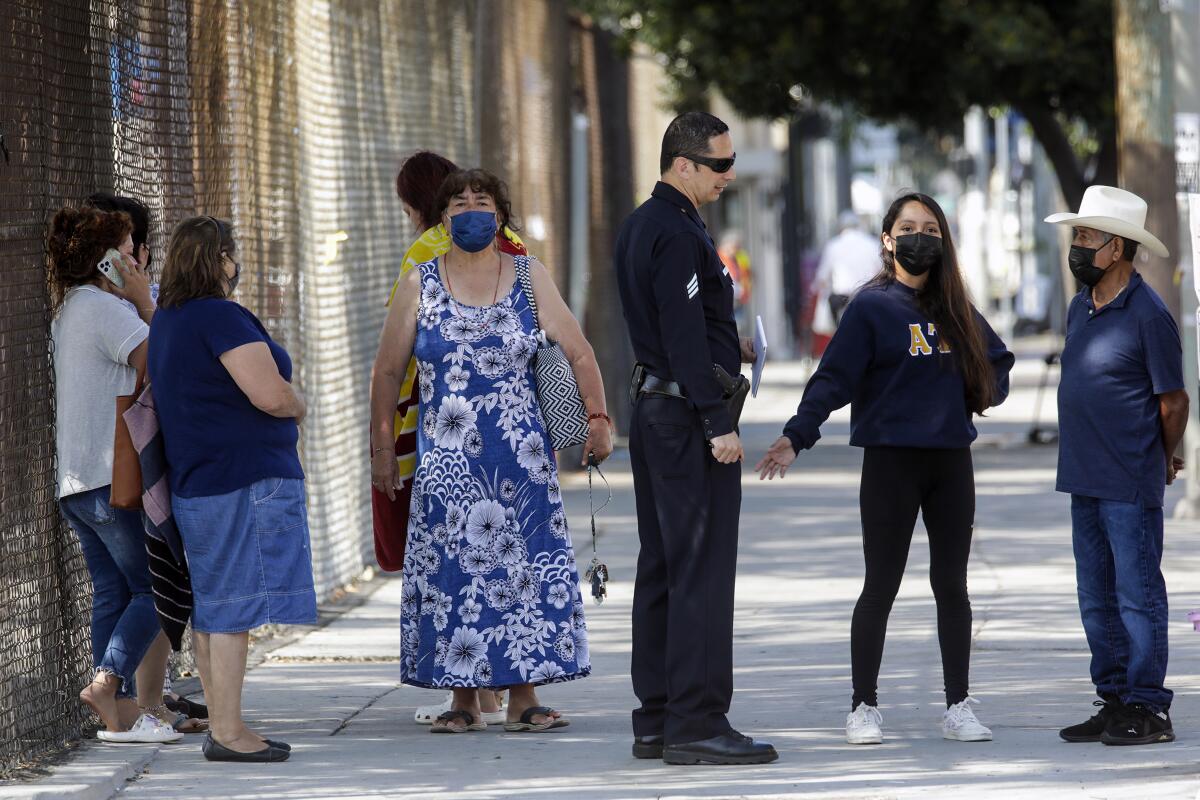
During that initial planning, according to the inspector general’s report, the concerned technician — identified only as “Bomb Technician C” — worried about the quantity of devices being placed into the containment vessel all at once.
“This is too much to do one shot, we’re gonna break it up, right?” the technician recalled saying to a colleague.
His colleagues and supervisor told him that he was wrong and should “relax,” he told investigators.
3 to 6 p.m.
About 3 p.m., officers went door to door to advise residents that they would need to evacuate for an hour. Those who wouldn’t or couldn’t leave were told to shelter away from windows.
Natalie Quintanilla was inside her apartment with her three children when officers knocked.
“It’s nothing major,” Quintanilla recalled them saying. “You might just hear a really loud noise and that’s pretty much it, but just in case we want to take you guys out.”
Quintanilla strapped her youngest son in a stroller and the four of them left to get food. Her neighbor Ruben Martinez and two of his daughters soon joined other residents camped out at the end of the street to watch the operation unfold. Martinez’s wife, Juana Oceguera, was not yet home from work.
Meanwhile, in the alley behind Ceja’s home, an ATF agent watched as two bomb technicians got to work on the first stage of their plan: using a device called a “remote cutter” to figure out what was in the homemade explosives.
First came X-raying two of the devices — one large, one small. The scans showed what looked like powder inside both. To the technicians, that meant they could safely cut the sample devices open.
So cut they did, emptying the powder into a container. What they found was a silvery substance, which the technicians later told investigators was “consistent with flash powder and aluminum powder and maybe potassium chlorate.”
The team then moved on to one of the most critical aspects of their work: determining the “net explosive weight” of the powder they intended to detonate in the containment vessel — which was designed to contain only a limited amount of explosives at a time.
The technicians believed all of the 320-plus devices held the same amount of powder as the two samples. So, the next step was to determine the weight of the samples and multiply it by the number of devices to reach the total explosive weight they needed to dispose of.
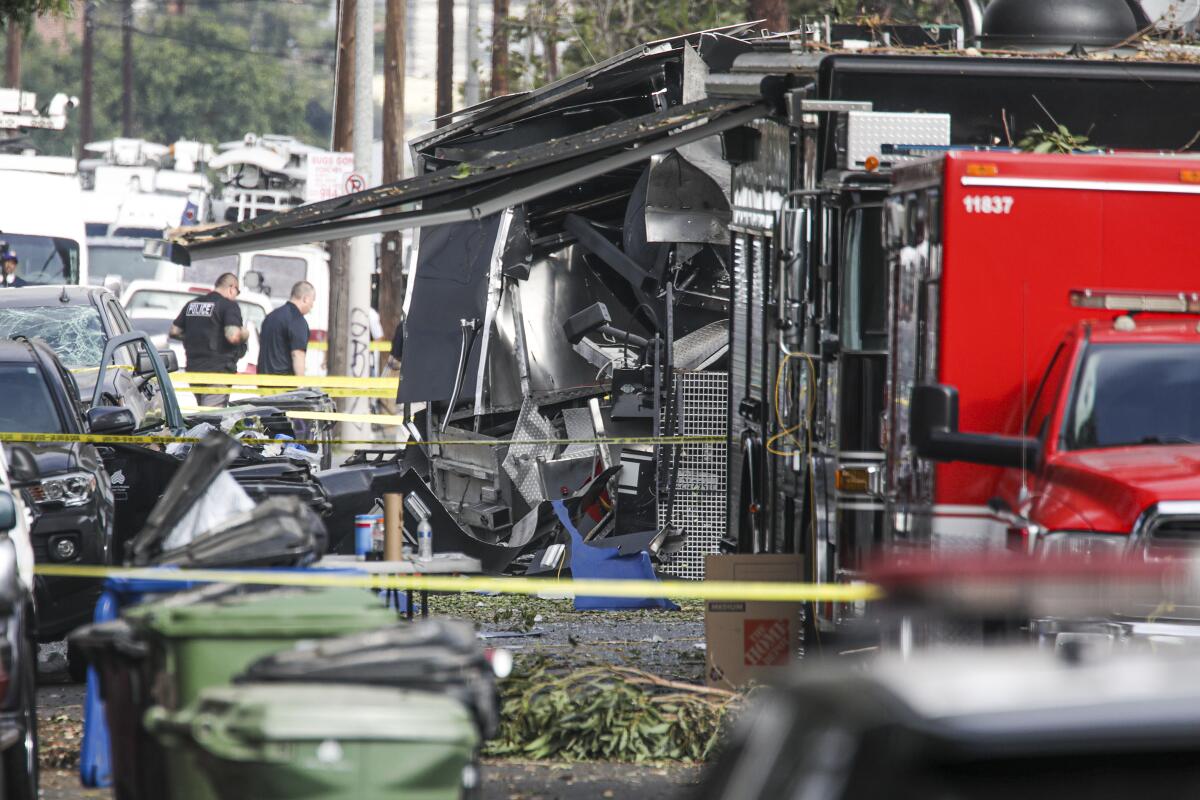
However, in a decision later highlighted by the ATF, the LAPD and the inspector general as a crucial failure, the lead technician — identified only as “Bomb Technician A” in the inspector general’s report — never weighed the powder.
Instead, he guessed.
Bomb Technician A estimated the explosive weight at 10 pounds. He later told investigators he had tried to be conservative, estimating higher weights than were likely, just to be safe.
No one used a scale at the scene. The technician picked up and looked at the devices, a technique the inspector general’s report called “holding and viewing.”
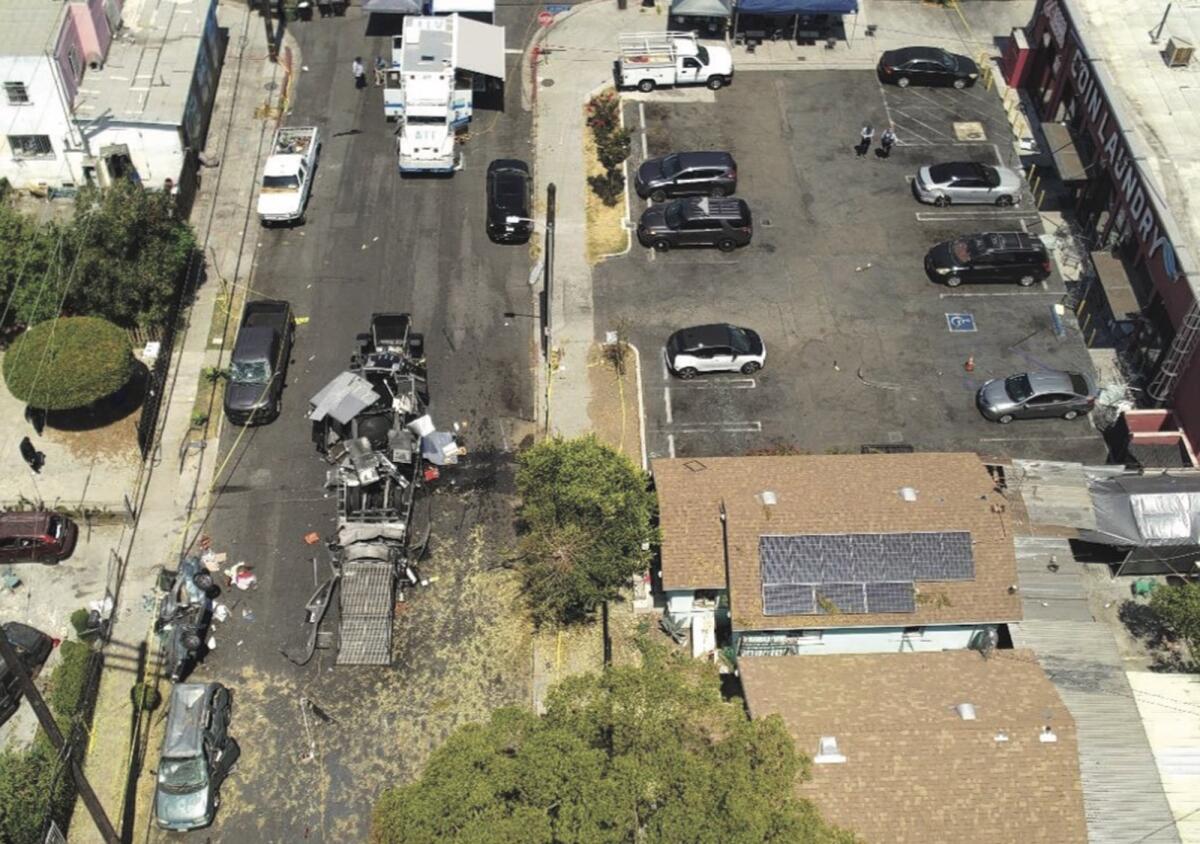
As Bomb Technician A was making his guess, Bomb Technician C again raised concerns as he assisted a third technician with the construction of a counter-charge — the explosive used to detonate the fireworks inside the vessel.
With their detective supervisor present, Bomb Technician C recalled, he again questioned the detonation plans, saying to the third technician, “This is a lot of material. This is a lot both [in terms of] net explosive weight and physical weight. It’s a lot of material. There’s a lot of devices.”
The supervisor allegedly told the two technicians to “hash it out” and stepped away again.
Nothing about the plan was ever changed in response to Bomb Technician C’s concerns.
The vessel was rated to handle only 33 pounds of explosives. The ATF would later determine the bomb squad loaded it with 39.8 pounds of explosives. That amount includes the counter-charge; a technician did use a scale to weigh that.
6 to 7:37 p.m.
By about 6 p.m., the illegal consumer grade fireworks had been hauled away by truck — 32,000 pounds in all.
At this point, portions of the street had been evacuated at the urging of police officers, but the block was hardly empty.

Some residents, like Becerra, and Silva and their elderly aunts, who were right next door to Ceja’s house and a stone’s throw from the containment vessel, were still in their homes.
Others — onlookers and members of the news media — were still outside, so close that Bomb Technician C raised more concerns and called for the team to hold off the detonation until people could be moved farther back.
“We are not here for [the media to get] a good shot,” he recalled saying in a later interview with investigators. “This is about safety.”
This time, people listened. At about 7 p.m. officials expanded the perimeter on each side of the containment vessel and directed a media helicopter to move to a higher altitude.
Farther down 27th Street, Maria Barajas and her husband — who said they were never told to evacuate — sat on the front steps of their home to watch the spectacle. Juana Oceguera was just arriving home from work and pulled into the alley near her apartment building on the block, which had not been closed off by police. At 7:36 p.m., as her children walked over to warn her of the police operation, she started recording a video.
Inside Becerra’s home, he and Silva were seated near the living room window, as her aunts and an uncle watched the news in the same room.
At 7:37 p.m., the supervising detective shouted, “Fire in the hole!” three times. Becerra and his wife heard the shout and turned toward the window. The supervisor counted down — “Three. Two. One.” — and then pressed the detonation button.
The next thing Becerra saw, he said, was “the sun” — a burst of light as the containment vessel blew apart and the blast it was meant to control shot out in all directions, flipping cars and cracking foundations, smashing windows and injuring residents. Glass shards littered Silva’s face.
Paul Sanchez, a photojournalist with KTLA-TV Channel 5 at the time, had been among those who moved back from the containment vessel a half-hour earlier. Even so, the blast still hit him like a “football-style block” and sent him to the hospital for hearing loss.
Less than 100 feet away, Oceguera’s video captured the explosion. “Oh, God!” she screamed in Spanish.
“Córrele! Córrele!” she yelled to her children. “Run! Run!”
Since detonation
Eight months since that moment, 19 families are still living in the Level, a luxury hotel downtown.
Among them is Kenia Quintanilla, along with her boyfriend and their 2-year-old daughter. She finds it shocking the bomb squad didn’t weigh the explosives.
“You don’t think they’re just going to estimate something. You think that they’re going to double-check, triple-check, quadruple-check that they have the right measurements,” she said. “It’s just kind of ridiculous.”
Becerra said that when he learned that a bomb technician’s warnings had been ignored, he felt a rush of frustration, anger and sadness.
“I can’t find the words,” he said. “This misfortune happened because of egotism.”
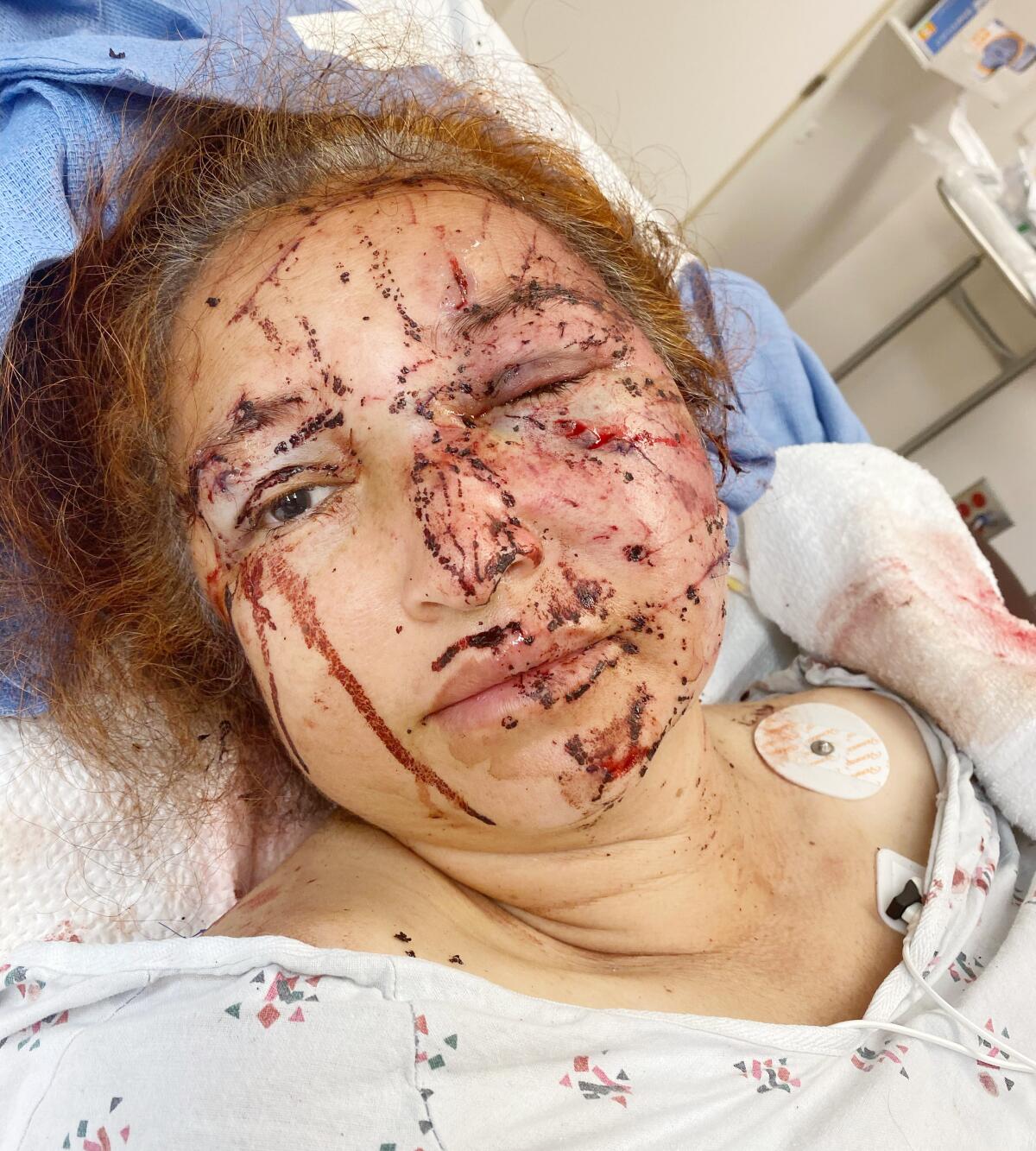
Ceja pleaded guilty in federal court last August to a single count of transporting explosives without a license. He is set to be sentenced this August. To date, he’s the only person to accept any blame.
The LAPD bomb technicians and supervisors involved in the explosion have never been publicly identified — another cause for anger among 27th Street residents.
According to the inspector general’s report, the officers involved have been on paid administrative leave or desk duty since the disaster and will remain so until an internal complaint investigation is concluded.
On Tuesday, LAPD Inspector General Mark Smith and two investigators on his team outlined his report’s findings and recommendations for improvement to the civilian Police Commission. Afterward, Commissioner Eileen Decker turned to LAPD Chief Michel Moore and other police leaders and demanded information on what the department was doing to change the “culture” within the bomb squad that allowed such an event to occur.
The officials outlined more training, better oversight, new rules to ensure that dissenting opinions be heard and new requirements: that explosives be weighed and not detonated in residential areas.
Back on 27th Street, repairs continue. The city recently estimated $5 million is needed for ongoing support of the neighborhood and its displaced residents.
Silva’s 85-year-old aunt, who has memory problems, asks every day why she isn’t at the home where she lived for 22 years, instead of the hotel downtown. Her niece explains, again and again, that it’s because the police made a terrible mistake.
Silva said she points out the fading scars on her face from the window that shattered. Just as her wounds get better day by day, she tells her aunt, so too will their house.
But last month, tired of waiting, her aunt left the hotel on her own. The terrified family went searching for her and alerted the police, who found her later that day.
She had walked more than two miles, back to 27th Street, back to the block police tore apart.
More to Read
Start your day right
Sign up for Essential California for news, features and recommendations from the L.A. Times and beyond in your inbox six days a week.
You may occasionally receive promotional content from the Los Angeles Times.
